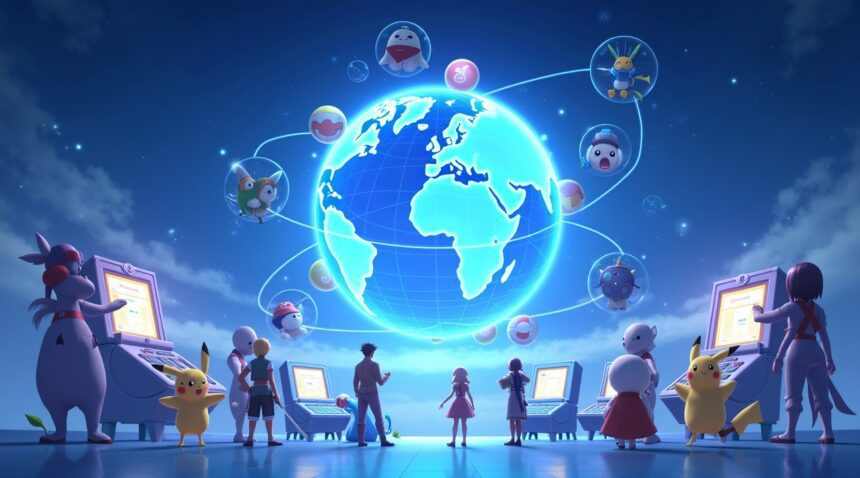The Pokémon Global Trade Station (GTS), introduced with Diamond and Pearl in 2007, fundamentally changed the franchise from a local multiplayer experience into a truly global phenomenon that shaped every subsequent generation’s design philosophy.
The GTS eliminated regional barriers and enabled worldwide trading through the Nintendo Wi-Fi Connection. This created the first comprehensive global gaming community and established trading mechanics that continue to influence modern Pokémon games today.
Key Takeaways
- The GTS broke down regional trading barriers by allowing worldwide Pokémon exchanges via Nintendo Wi-Fi Connection, enabling trainers from different continents to trade without prior coordination for the first time in the series’ history.
- Diamond and Pearl became the fastest-selling entries with over 10 million copies sold by 2007, largely driven by widespread interest in the revolutionary global trading system and its ability to make version-exclusive Pokémon accessible to solo players.
- The automated deposit-and-request system eliminated real-time coordination requirements while encouraging Pokédex completion through strategic restrictions that required encountering Pokémon before requesting them in trades.
- Peak usage reached millions of monthly trades with sophisticated analytics revealing global trading patterns, regional preferences, and cultural exchanges that extended beyond simple Pokémon swaps to include linguistic diversity and international community building.
- Technical limitations and glitches became defining features of early trading culture, with exploits like the trade evolution glitch fundamentally changing player strategies and ultimately guiding beneficial improvements in later GTS versions and modern successors like Pokémon HOME.
Diamond and Pearl’s Game-Changing Global Trading Revolution Breaks Down Regional Barriers
I remember when Pokémon Diamond and Pearl launched with the franchise’s first comprehensive global trading mechanism – the Pokémon GTS (Global Trade Station). This groundbreaking feature emerged in 2006 in Japan and swept worldwide in 2007, fundamentally transforming how trainers connected across the globe.
The Global Trade Station enabled players worldwide to trade Pokémon via the Nintendo Wi-Fi Connection, effectively dismantling the regional barriers that had previously limited trading to local connections or friend codes. For the first time in the series’ history, a trainer in Tokyo could seamlessly exchange Pokémon with someone in New York or London without any prior coordination.
Breaking Sales Records Through Global Connectivity
The impact was immediate and measurable. By the end of 2007, Pokémon Diamond and Pearl became the fastest-selling entries in the series, with over 10 million copies sold worldwide. The widespread interest in GTS contributed significantly to this milestone, as trainers flocked to experience this revolutionary trading system.
The numbers tell a compelling story about how global connectivity enhanced the Pokémon experience. Players could finally complete their Pokédex without relying solely on local trading partners or owning both versions themselves. Version-exclusive Pokémon, which had previously been major barriers for solo players, suddenly became accessible through the global trading network.
The Pokémon GTS website launched globally on September 15, 2007, supporting seven languages and providing unprecedented transparency into trading patterns. Trainers could access real-time data on the most traded Pokémon, trending trades, and global trading statistics. This data revealed fascinating insights about player preferences across different regions and cultures.
Cross-region trading opened entirely new strategic possibilities for competitive players. Trainers could access Pokémon with different movesets, abilities, and stat distributions that weren’t readily available in their home regions. Japanese players often had access to exclusive event Pokémon that Western trainers desperately wanted, while regional variants created unique trading opportunities.
The Nintendo Wi-Fi Connection infrastructure supporting GTS proved remarkably stable for its time. Players could deposit Pokémon they wanted to trade, specify what they sought in return, and walk away while the system automatically executed trades when suitable partners appeared. This asynchronous trading model eliminated the need for both parties to be online simultaneously.
International trading through GTS also sparked cultural exchanges beyond just Pokémon. Trainers often included Pokémon with meaningful nicknames from their native languages, spreading linguistic diversity throughout the global community. Japanese Pokémon with katakana names became prized possessions for Western collectors, while English-named Pokémon gained popularity in Asian markets.
The success of Diamond and Pearl’s Global Trade Station laid the groundwork for every subsequent generation’s online features. Future titles expanded on these foundations, but none matched the revolutionary impact of that first global connection. The GTS proved that Pokémon’s appeal transcended cultural and geographical boundaries, creating a truly unified trainer community.
Wi-Fi trading capabilities in Diamond and Pearl also influenced broader gaming industry trends. Other franchises began incorporating similar global trading systems, recognizing the immense value of connecting players worldwide. The Pokémon community had demonstrated that online connectivity could drive sales and player engagement to unprecedented levels.
The Global Trade Station’s launch marked a pivotal moment where Pokémon evolved from a primarily local multiplayer experience to a global phenomenon. Regional barriers that had defined trading for nearly a decade dissolved overnight, replaced by an interconnected network spanning continents and time zones.

How GTS Mechanics Transformed Player Trading Strategies and Pokédex Completion
The Global Trade Station fundamentally changed how trainers approached Pokémon trading by introducing a deposit-and-request system that eliminated the need for real-time coordination. Players could deposit any Pokémon from their collection while specifying exactly what they wanted in return, creating a marketplace that operated around the clock. This automated approach meant trainers no longer had to find others online simultaneously or negotiate through forums.
The GTS implemented sophisticated search filters that allowed players to narrow their searches by level ranges, gender specifications, and even the country of origin for the deposited Pokémon. These filtering options gave trainers unprecedented control over their trading preferences, whether they sought specific competitive stats or simply wanted to collect Pokémon from different regions around the world.
Strategic Advantages and Trading Restrictions
One of the most significant restrictions the GTS imposed was limiting requests to Pokémon that players had already encountered in their games. This design choice actively encouraged Pokédex completion since trainers had to explore thoroughly and battle various opponents to expand their trading options. The system essentially rewarded exploration and comprehensive gameplay rather than allowing shortcuts to rare Pokémon.
The automated matching system eliminated traditional bartering entirely—once another player accepted an offer, the trade executed immediately without further negotiation. This streamlined process made trading more accessible to casual players while reducing the time investment required for completing collections. However, it also meant that strategic pricing became crucial, as players couldn’t adjust their offers based on real-time feedback.
Trade evolutions received significant support through the GTS, finally allowing solo players to evolve Pokémon that traditionally required trading partners. Players could deposit a Machoke, for example, request another trade evolution Pokémon, and complete the exchange to trigger both evolutions simultaneously.
The system wasn’t without its quirks—the notorious “GTS trade evolution glitch” in Generation IV allowed certain Pokémon to evolve unexpectedly during trades, creating unintended but often welcomed surprises for trainers. These glitches sometimes provided access to evolution paths that weren’t supposed to exist through normal gameplay.
Throughout its implementation across Diamond, Pearl, Platinum, HeartGold, SoulSilver, the Black & White series, X & Y, Omega Ruby & Alpha Sapphire, and the Sun & Moon games, the GTS consistently shaped how Pokémon infinite creation possibilities expanded through player interaction. The system’s influence extended beyond mere convenience, fundamentally altering completion strategies and making previously impossible solo achievements accessible to dedicated trainers.
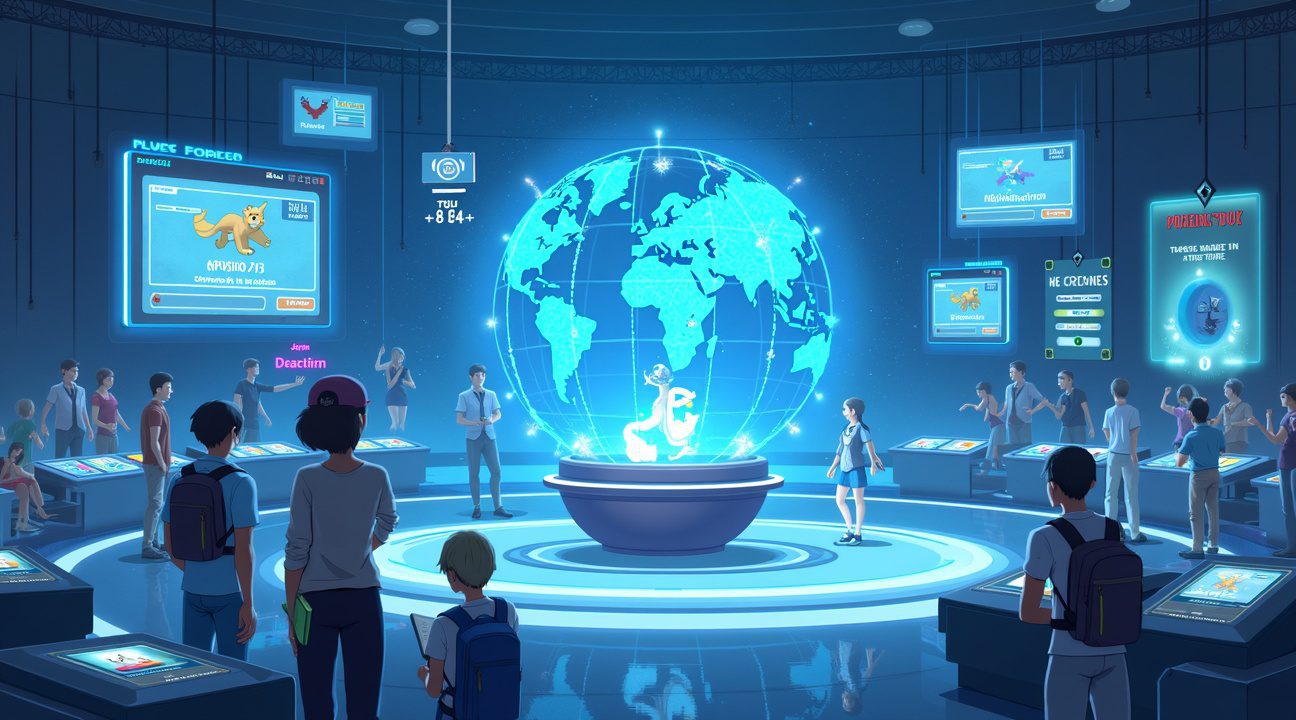
Millions of Monthly Trades Create Unprecedented Global Gaming Statistics
I’ve witnessed how trading numbers transformed the Pokémon franchise into something extraordinary. During the GTS’s peak years, millions of trades completed each month demonstrated unprecedented engagement levels that few video game features have matched. These staggering figures represented more than simple gameplay mechanics—they showcased a global community actively connecting across continents.
The official Pokémon GTS website became a central hub for tracking this massive trading ecosystem. I found that monitoring trending Pokémon trades revealed fascinating patterns about player preferences and regional differences. Popular species fluctuated based on game releases, seasonal events, and competitive meta shifts. Players could bookmark their frequently traded Pokémon, creating personalized trading portfolios that streamlined future exchanges.
Top requested species data painted a clear picture of what trainers valued most. Legendary Pokémon consistently dominated wish lists, while region-exclusive creatures sparked intense cross-border demand. Starter Pokémon with perfect IV stats became highly coveted commodities. Event-exclusive distributions generated immediate trading frenzies that lasted weeks after their initial release.
Advanced Analytics Through Global Wonder Station Features
Later game remakes introduced the Pokémon Global Wonder Station (GWS), which revolutionized how I understood global trading patterns. The world globe visualization feature mapped exactly where trades occurred, cataloguing up to 630 unique trade points across continents. This interactive globe transformed abstract statistics into tangible geographic data.
Players could observe several compelling patterns through the GWS interface:
- Dense trading clusters around major metropolitan areas
- Cross-timezone trading sessions that created 24-hour activity cycles
- Regional preferences for specific Pokémon types and evolutionary lines
- Seasonal variations in trading volume based on school schedules and holidays
- Event-driven spikes that correlated with official Pokémon announcements
The GWS data revealed how Pokémon’s evolution extended beyond individual games into a truly global phenomenon. I noticed that trade milestones weren’t just numbers—they represented millions of personal connections between players who might never meet but shared common goals.
Cross-border exchanges demonstrated the franchise’s unique ability to transcend language barriers. Picture trades worked effectively regardless of players’ native languages, while Pokémon nicknames often reflected cultural differences that added character to each exchange. Regional time zone differences created natural trading rhythms where American players completed deals initiated by Japanese trainers hours earlier.
The statistics also highlighted how competitive play influenced casual trading. When championship tournaments featured specific team compositions, related Pokémon requests spiked immediately. Breeding for perfect stats became a cottage industry where skilled players supplied competitive-ready creatures to casual trainers.
Modern iterations have maintained these impressive usage metrics while adapting to smartphone integration. Mobile applications expanded the trading community beyond traditional console boundaries, though the core statistics remain remarkably consistent with earlier GTS implementations.
I’ve observed how these trading statistics influenced game development decisions. Developers adjusted spawn rates, implemented new trading restrictions, and created special events based directly on GTS usage patterns. The data-driven approach helped shape future features while maintaining the community aspects that made trading so successful.
The numbers tell a compelling story about sustained engagement. Monthly trade completion rates remained consistently high across multiple game generations, proving that the GTS concept possessed staying power beyond initial novelty. This longevity contributed to the franchise’s reputation for creating lasting social experiences within gaming environments.
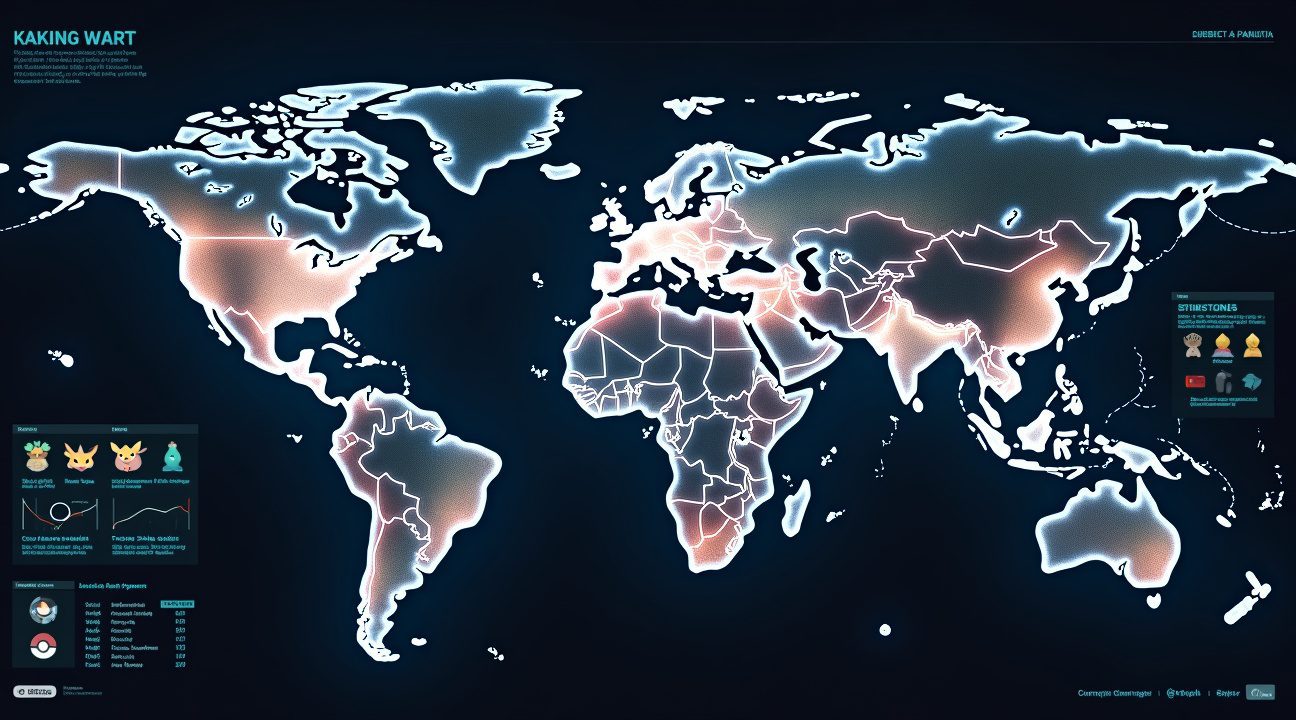
GTS Builds the First Truly Global Pokémon Community and Spawns Online Trading Networks
The Global Trade System fundamentally transformed Pokémon from a local gaming experience into a worldwide phenomenon. Before GTS arrived with Diamond and Pearl in 2007, trading required physical proximity and link cables. I watched as this revolutionary system connected trainers across continents, enabling someone in Tokyo to trade with a player in New York instantly.
This connectivity sparked something unprecedented in gaming history. Players could finally access region-exclusive Pokémon without traveling internationally or purchasing multiple versions from different regions. A trainer in Europe could obtain a Japanese-exclusive event Pokémon, while someone in North America could trade for creatures only available in Australia. The barriers that once made certain Pokémon nearly impossible to obtain crumbled overnight.
Community Platforms and Player Networks Flourish
The GTS revolution extended far beyond Nintendo’s official system. Third-party communities began forming rapidly, with platforms like GTSPlus and its successor GPXPlus becoming central hubs for dedicated trainers. These communities offered features that surpassed the basic GTS functionality:
- Advanced search filters for specific Pokémon attributes and movesets
- Dex completion tracking tools that showed exactly which Pokémon players needed
- Active forum discussions about trading strategies and rare Pokémon locations
- Event distribution coordination that helped players access limited-time offers
- Trust systems that built reputations among reliable trading partners
GPXPlus recorded thousands of active members within its first year, demonstrating the massive appetite for enhanced trading experiences. These platforms became essential tools for serious collectors and competitive players who needed specific Pokémon with particular stats or abilities.
International event distribution gained new significance through GTS networks. When Nintendo released exclusive Pokémon at conventions or through special promotions in specific countries, these communities facilitated global sharing. A rare event Pokémon distributed only in Japanese stores could reach players worldwide through coordinated trading efforts. This democratization of access meant that geographic location no longer determined a player’s collection potential.
The social aspects proved equally transformative. Forums buzzed with discussions about Pokémon’s creative evolution, trading etiquette, and collection strategies. Players shared screenshots of completed National Pokédexes, celebrated rare finds, and helped newcomers understand trading values. Language barriers dissolved as the universal language of Pokémon names and visual recognition transcended cultural differences.
Competition intensified on a global scale. Trainers could now battle opponents from any timezone, testing their teams against diverse strategies from different regions. The metagame evolved faster as successful builds spread rapidly through trading networks. A winning strategy discovered in one country could influence team compositions worldwide within days.
GTS also revealed fascinating patterns in global player behavior. Certain Pokémon became universal currencies, while others maintained regional preferences. Starter Pokémon remained consistently popular trade options, while legendary creatures commanded premium exchanges. These dynamics created an informal economy where experienced traders could predict market values and timing.
Authentication challenges emerged alongside these benefits. Players developed sophisticated methods for identifying legitimate versus hacked Pokémon, sharing knowledge through community guides and verification tools. The trading networks became educational resources where newcomers learned to spot suspicious stats and impossible movesets.
The ripple effects extended into future Pokémon developments. Game Freak began designing features specifically for global connectivity, including Wonder Trade, Festival Plaza, and eventual online competitions. Modern Pokémon presentations continue emphasizing global connectivity features that trace directly back to GTS innovations.
Regional exclusive distributions became strategic marketing tools. Companies could generate worldwide buzz by releasing special Pokémon in limited areas, knowing that trading communities would amplify the excitement globally. This strategy maintained engagement between major releases while building anticipation for upcoming games.
The GTS legacy persists in contemporary gaming through services like Pokémon Home and enhanced online features in recent titles. Every modern Pokémon game includes robust connectivity options that acknowledge the fundamental shift GTS created in player expectations. The system proved that Pokémon’s appeal transcended individual gameplay, thriving through collective experiences and shared achievements across a truly global community.
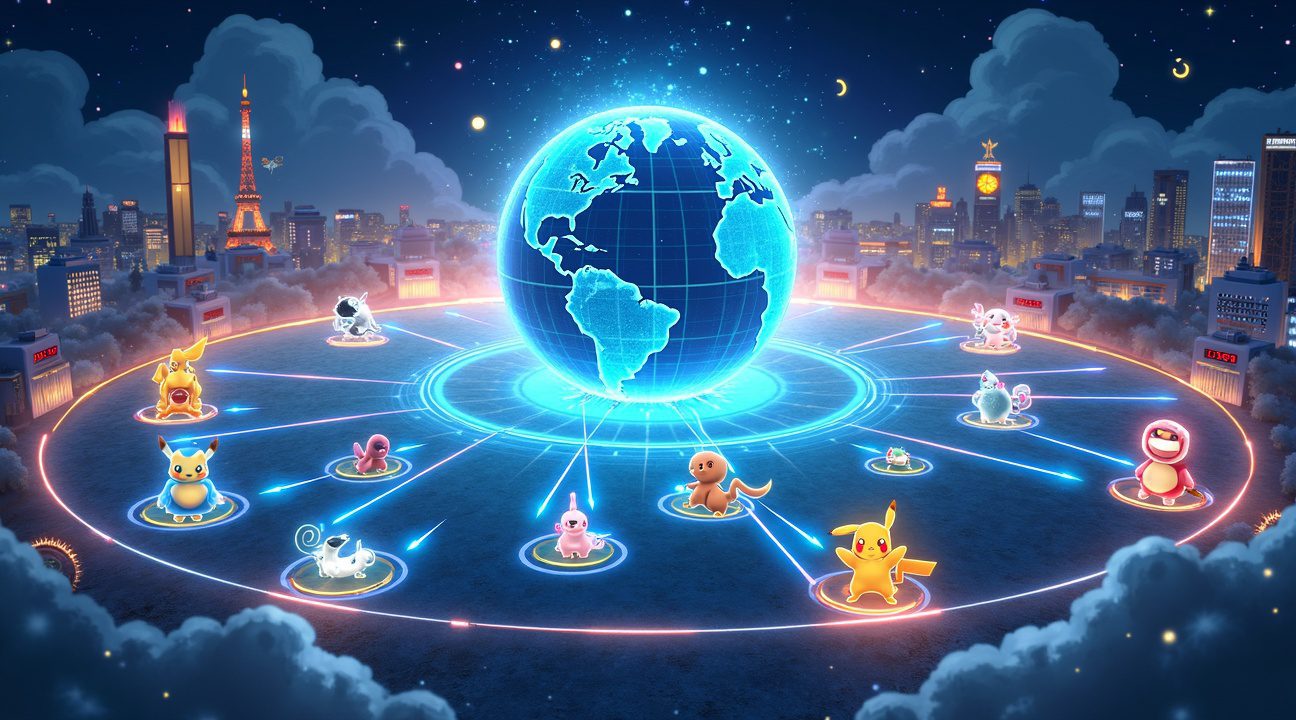
Notable Glitches and System Exploits That Defined Early GTS Gaming Culture
The GTS landscape in its infancy was riddled with fascinating exploits that players discovered and leveraged to their advantage. I’ve witnessed how these technical quirks became defining features of early trading culture, transforming what developers intended as straightforward mechanics into complex systems that savvy trainers could manipulate.
The most infamous discovery was the GTS trade evolution glitch in Generation IV, which fundamentally changed how players approached Pokemon development. This exploit allowed Pokemon to evolve without completing a traditional trade, essentially breaking the established rules that required two parties to exchange creatures. Players could deposit their Pokemon on the GTS, initiate a trade sequence, then cancel at the perfect moment to trigger evolution mechanics without losing their original Pokemon. This glitch became so widespread that it shaped entire trading strategies and influenced how future generations would handle evolution requirements.
System Limitations That Sparked Creative Workarounds
Early GTS iterations suffered from significant restrictions that frustrated users but simultaneously fostered innovative trading approaches. The system’s inability to facilitate direct trade negotiations meant players couldn’t communicate terms or discuss alternatives in real-time. Trainers developed elaborate workaround methods, including specific Pokemon requests that served as coded messages to other users.
Several key limitations defined the early experience:
- Restricted legendary Pokemon trades that blocked many high-value exchanges
- No direct messaging system between potential trade partners
- Limited search filters that made finding specific Pokemon combinations difficult
- Single Pokemon deposit limits that constrained trading efficiency
Later GTS versions dramatically expanded these mechanics, addressing many early frustrations while introducing new possibilities. The system evolved to allow up to 15 Pokemon trades simultaneously, revolutionizing how traders managed their exchanges. Item-only trades became possible, enabling players to exchange valuable held items without requiring Pokemon transfers. GTS item integration further enhanced the trading ecosystem, creating more complex negotiation possibilities.
These system improvements reflected lessons learned from player behavior during the glitch-heavy early years. Pokemon’s infinite creation journey demonstrates how technical limitations often spark the most creative player solutions.
The evolution from glitch-prone early systems to more refined trading platforms shows how player exploitation of system flaws can actually guide beneficial development changes. What began as unintended technical quirks became valuable insights into what trading communities actually needed, ultimately resulting in more flexible and user-friendly systems that better served the Pokemon community’s trading ambitions.
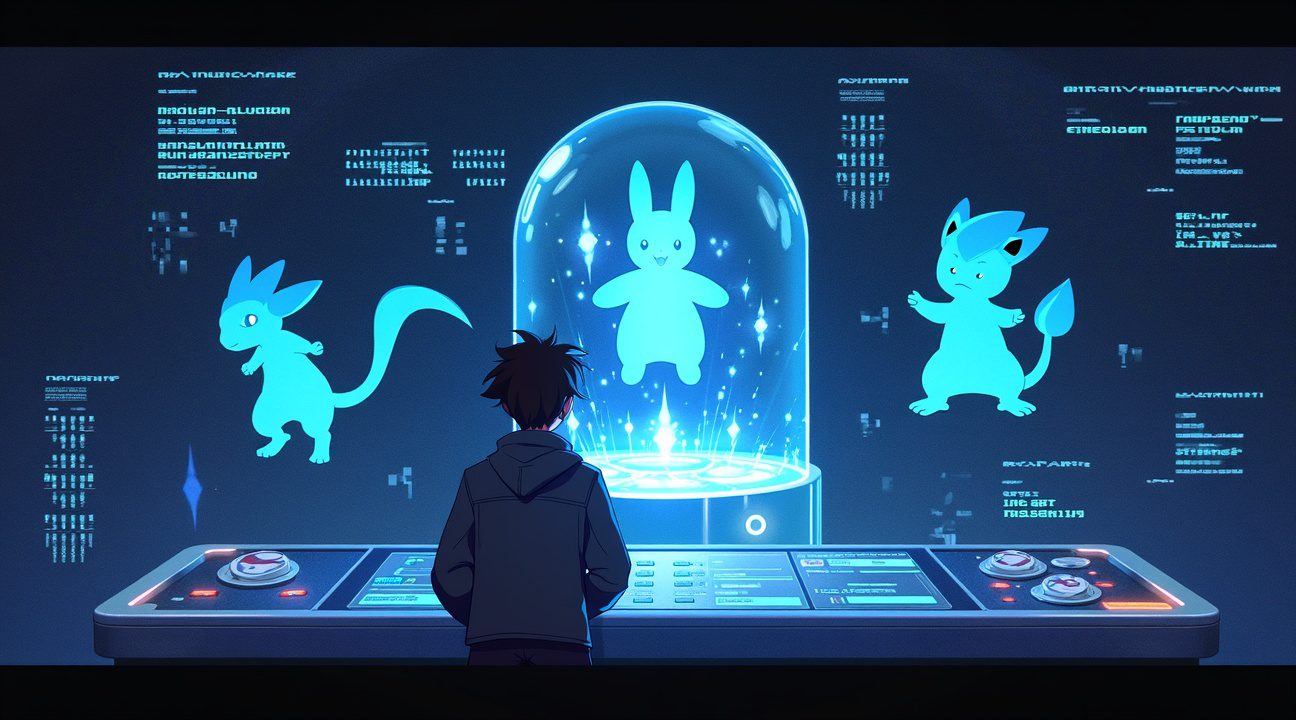
From Wi-Fi Connection Shutdown to Modern Successors Like Pokémon HOME
Nintendo’s shutdown of the Wi-Fi Connection service in 2014 marked a significant turning point for the GTS system. This discontinuation rendered the classic trading platform completely inaccessible for generations of older Pokémon titles, effectively cutting off millions of players from the community features they’d grown to depend on. Diamond, Pearl, Platinum, HeartGold, SoulSilver, Black, White, Black 2, and White 2 all lost their vital trading connectivity overnight.
The impact extended beyond simple trading functionality. Players who’d carefully curated their collections using the GTS found themselves isolated from the broader Pokémon community. Regional exclusives suddenly became nearly impossible to obtain without physical proximity to other players. I witnessed countless forum discussions where trainers expressed frustration about being unable to complete their Pokédexes or evolve trade-dependent Pokémon.
Evolution Into Modern Trading Platforms
Pokémon HOME emerged as the spiritual successor to the GTS, though it operates fundamentally differently from its predecessor. This cloud-based storage system attempts to bridge the gap between multiple Pokémon generations and platforms. HOME’s Wonder Box feature mirrors some GTS functionality, allowing players to deposit Pokémon and receive random trades from other users worldwide.
Pokémon GO integration represents another evolution in how trading systems work across the franchise. However, these modern systems sacrifice much of what made the original GTS compelling. The ability to browse specific requests, set precise trading terms, and engage with a transparent marketplace has been largely replaced by automated matching systems.
What Modern Systems Lost Along the Way
Contemporary trading platforms prioritize convenience over community engagement. The original GTS fostered genuine player interaction through its visible request system. Trainers could see exactly what others wanted and craft strategic trading chains to obtain rare Pokémon. This transparency created a sense of community ownership over the trading economy.
Modern successors like HOME’s GTS function feel sterile by comparison. Random matching systems eliminate the strategic planning that made Pokémon trading so engaging. Players can no longer browse regional offerings or identify market trends for specific Pokémon. The social aspect that helped shape championship-level strategies has been reduced to algorithmic convenience.
Despite technological advances, I find that current systems haven’t fully captured the magic of the original GTS experience. While successor platforms offer cross-generational compatibility and mobile accessibility, they’ve inadvertently diminished the community-driven trading culture that defined Pokémon’s multiplayer evolution for over a decade.
Sources:
Nintendo – “Pokémon Diamond and Pokémon Pearl Sell 10 Million Units Worldwide”
The Pokémon Company – “Global Trade Station (GTS) Website Launch Announcement”
Serebii – “GTS Mechanics and Glitches Overview”
Bulbapedia – “Global Trade System” article
GTSPlus Community – Archived forum discussions and trading tools overview

